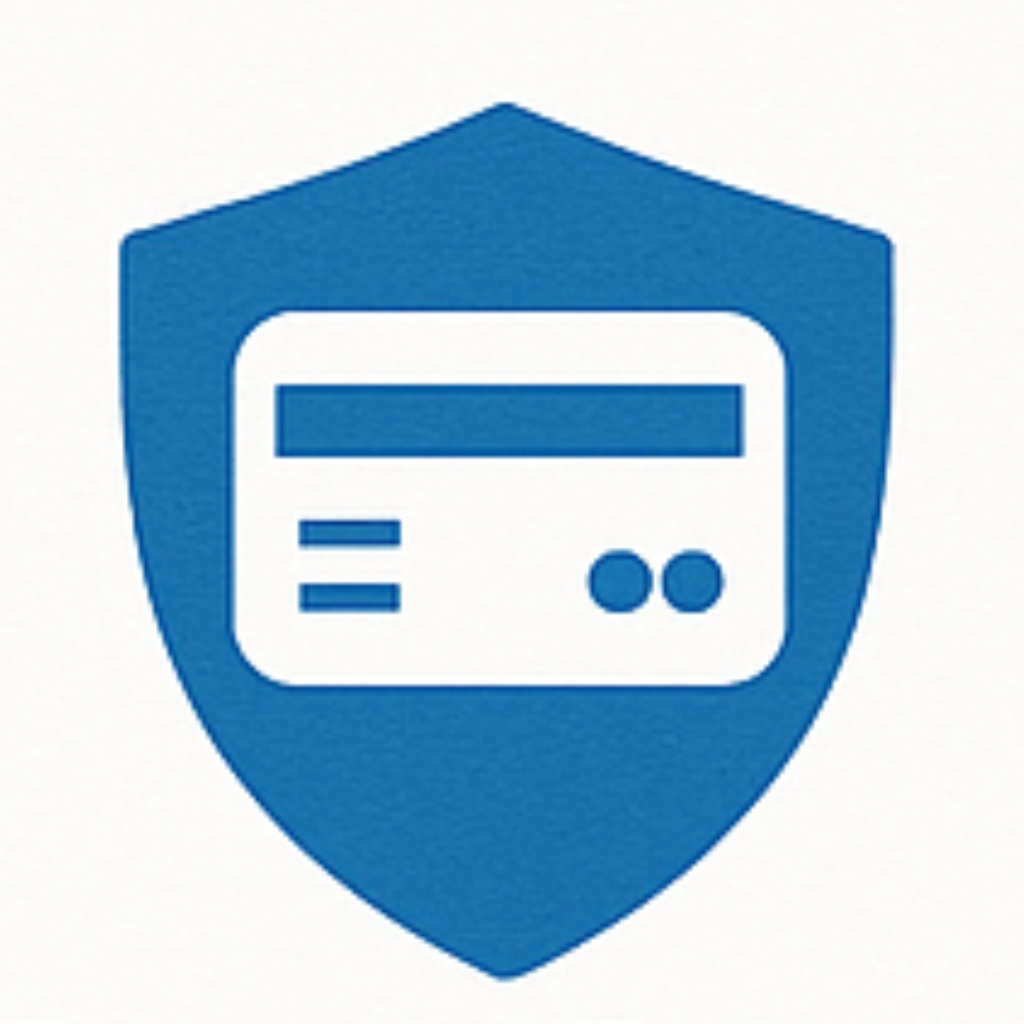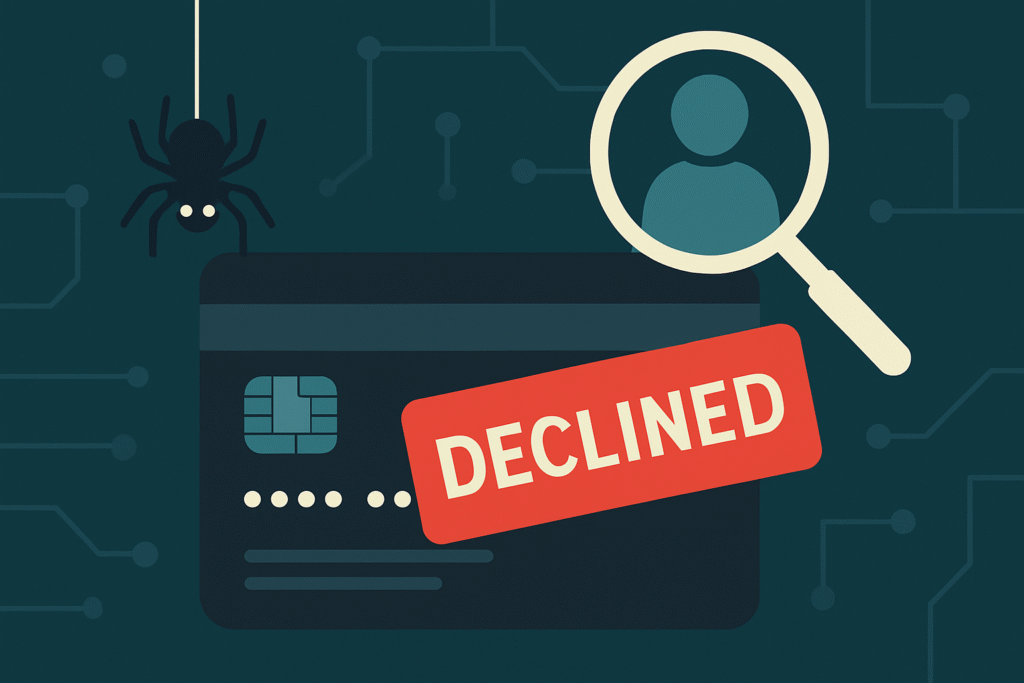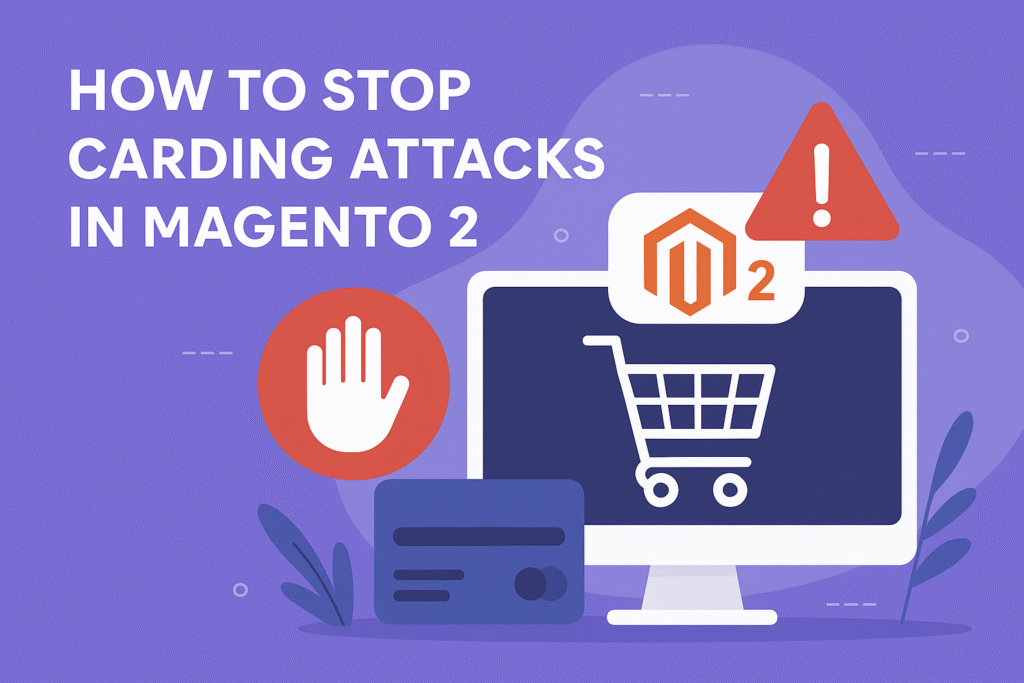What Is a Carding Attack?
Why Every eCommerce Store Owner Needs to Understand Carding
Carding isn’t just a technical problem — it’s a threat that hits your reputation, your revenue, and your customers. Whether you run a small WooCommerce store or a Magento 2 enterprise setup, understanding carding attacks is step one in stopping them. In this post, we’ll break down everything you need to know: how carding works, what it looks like, how it impacts your store, and what you can do today to stop it.
What Is a Carding Attack?
A carding attack is when cybercriminals use stolen credit card information to test which cards are valid by making small purchases or form submissions on your checkout page. It’s often automated using bots that simulate human checkouts. The attacker’s goal isn’t to buy from you — it’s to verify stolen card data before using it elsewhere for big fraud.
How Do Carding Attacks Work?
Carding attacks rely on automation to test stolen credit card data quickly and efficiently. Typically, a bot is programmed to run hundreds or even thousands of transactions using different stolen card numbers. These transactions often hit your checkout page, triggering authorization requests with each attempt. While most stolen cards will be declined, the attackers are hunting for the small percentage that successfully pass. When a card is confirmed as valid, the attacker saves that information for future use—either on high-value purchases or by selling the card details on the dark web. This relentless testing can overwhelm your payment systems and leave your business vulnerable to financial losses.
Here’s the general flow:
- A bot is programmed to run hundreds or thousands of test transactions.
- Each transaction uses a different stolen card number.
- The checkout page is used to trigger an authorization response.
- Valid cards are flagged for future use — possibly on more expensive items or on other sites.
It often happens in the background — you may only notice it when payment failures spike or your mail server is overwhelmed by bounces.
Why Small and Mid-Size Stores Are the Prime Targets
Small and mid-size stores are often targeted by carders because they typically lack the advanced cybersecurity measures that larger enterprises put in place. These stores might not have robust firewalls, sophisticated anti-bot protection, or even customized payment gateway settings, making them easier targets for criminals who want to test stolen card data. Since smaller businesses often rely on default security configurations and lack dedicated fraud monitoring, they become prime testing grounds for stolen card lists. Carders exploit these vulnerabilities to validate stolen credit cards with minimal risk of being caught, often before moving on to larger attacks
Carders know that smaller stores:
- Don’t use enterprise-grade firewalls
- Are less likely to have anti-bot protection
- Often rely on default payment gateway settings
- This makes them easy testing grounds for stolen card lists.
What Does a Carding Attack Look Like in Your Logs?
When analyzing your site logs for potential carding attacks, it’s crucial to understand the patterns that attackers typically leave behind. Carding attacks often flood your system with repeated, rapid-fire failed payment attempts as bots test stolen card numbers. These attempts might share the same billing name but use different card numbers in quick succession. You may also notice multiple failed transactions originating from a variety of IP addresses, suggesting that the attacker is using a botnet to avoid detection. Additionally, watch for suspicious email addresses that don’t look legitimate, such as disposable email addresses or those with odd formats. By keeping an eye on these red flags, you can act quickly to block carding attempts before they harm your business.
Keep an eye out for:
- Dozens or hundreds of failed payments in a short period
- Payments with identical billing names but different card numbers
- Multiple failed transactions from different IP addresses
- Order emails going to fake or disposable email addresses
The Cost of Doing Nothing
Ignoring carding attacks can quickly spiral into a financial and operational nightmare. When your checkout page is flooded with fraudulent attempts, your payment gateway might flag or suspend your account, which means legitimate payments won’t go through either. As bots use disposable emails, your email domain can get blacklisted for spam, making it harder for real customers to receive order confirmations or support responses. The server resources that should be serving your genuine customers instead get hijacked by bots, leading to a slower experience for everyone. To make matters worse, you’ll face a wave of refund disputes and chargeback fees from banks, draining both your time and your money. In short, doing nothing about carding is more than just a hassle — it’s a serious threat to your business’s reputation and bottom line.
If you ignore carding, here’s what happens:
- Your payment gateway account may get flagged or suspended
- Your email domain can be blacklisted for spam
- You’ll burn server resources and slow down real users
- Refund disputes and chargeback fees start piling up
Why Traditional IP Blocking Fails?
Traditional IP blocking is no longer enough to stop sophisticated carding attacks. Attackers now use proxy networks or residential IP addresses that rotate constantly, effectively masking their true locations. This means that every transaction can appear to come from a different, legitimate-looking IP address, making it nearly impossible for IP-based security measures to keep up. As a result, IP blocking becomes a game of whack-a-mole, failing to provide the comprehensive protection needed against determined attackers.



